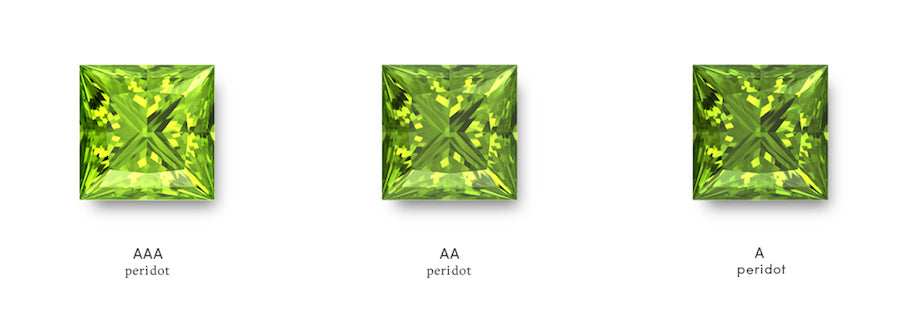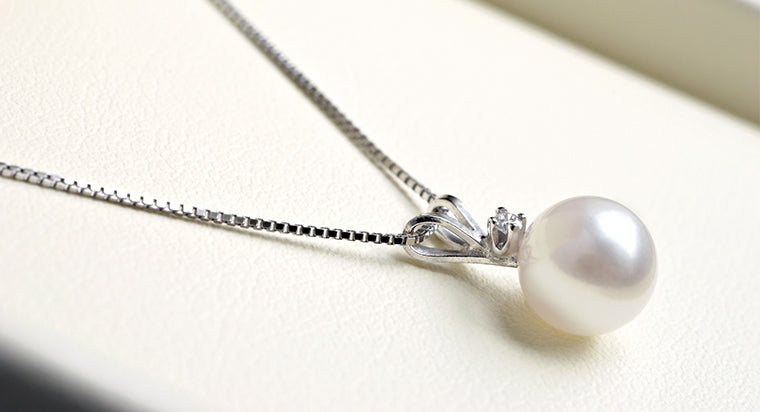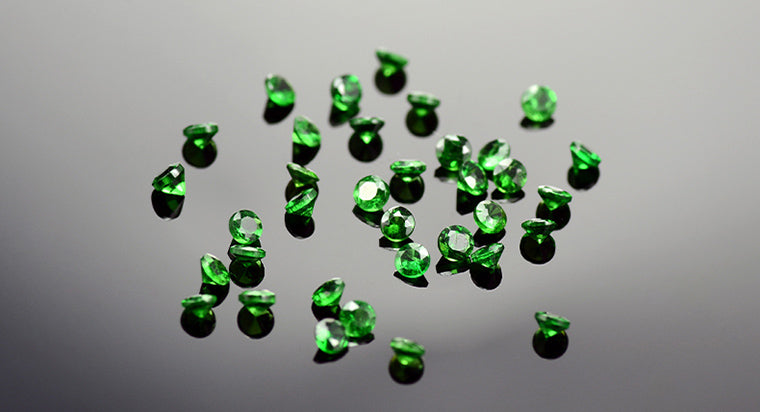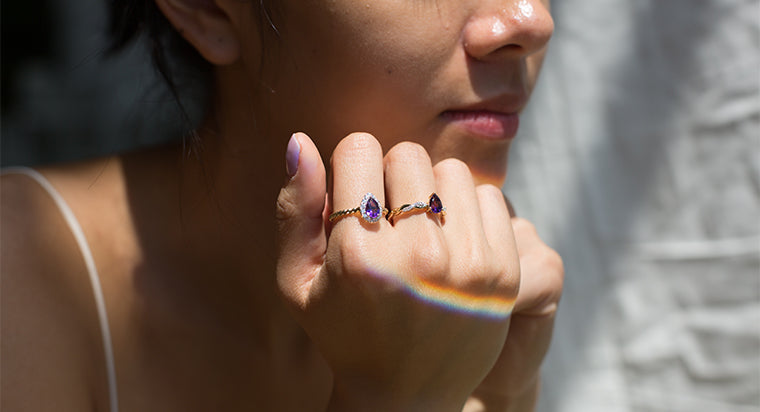Peridot Color
When most of us think of green gemstones, the first thing that comes to mind is the emerald. After all, emeralds are the rarest and valuable green gem that most people know about. However, there’s another green gemstone out there that needs our attention: Peridot. Peridot is an exclusively green gemstone, and it’s widely used in jewelry. In fact, color is one of the most important qualities of this beautiful gem.
TABLE OF CONTENTS
What is Peridot?
Peridot Chemical Composition
Peridot is referred to by gemologists as Olivine. This is a silicate mineral with a hardness between 6.5 and 7, which is about the same as quartz. However, unlike quartz, olivine is rich in magnesium and iron. It is this iron that makes the gemstone green, and the amount of it (along with other conditions during formation) determines the depth of the green color. Peridot does not occur in any color other than green.
Where is Peridot found?
Peridot is found in deposits of volcanic rock, usually solidified lava flows. Most often, Peridot takes the form of crystals lining pockets in the volcanic rock, and these crystals tend to be small. However, there are also larger crystals, sometimes weighing several pounds, which line larger cavities in those rocks. Other times, Peridot can be found in basalt, which is a more porous volcanic rock.
Where is Peridot mined?
Deposits are found in many places worldwide. For instance, the most famous Peridot deposit is on the island of Zabargad in the Red Sea. Egyptians have mined Peridot here for thousands of years, and it’s still a commercially viable product. Other major deposits include Pakistan (in the Himalayas), the U.S (New Mexico, Arizona), Myanmar, China, Vietnam, and Finland. Recently, there’s been a discovery of Peridot on Sardinia in Italy.
How is it Peridot mined?
Mining for Peridot is fairly simple. That’s because most of the lava flows where it’s found are close to the surface. As a result, much of the mining activity is from alluvial (surface) deposits, not shaft mining. On the other hand, some digging is generally required to uncover the rock, which might be covered in soil. Also, if the Peridot is found in a large fissure of the rock, this rock will have to be chipped away to free the Peridot crystal. Raw Peridot is also found in meteorites, though this is a rare occurrence.
Peridot Color
As we have said before, Peridot is always green. However, there is a range of Peridot color. Most famously, Peridot is a yellowish-green that would remind you of spring grass, often called Peridot green. However, different colors of Peridot range from a pure green that can get it confused with emerald, to  a brownish-green or olive, and even close to yellow. Ultimately, it’s important to remember that the classic yellow-green stones are what normally gets used for Peridot jewelry.
Peridot Clarity
One of the great things about Peridot is its high level of transparency. Like many other popular gemstones, most raw Peridot is eye clean. This means that it doesn’t have many inclusions or other impurities in the Peridot crystal that can be seen with the unaided eye. However, in larger stones there may be some cloudiness, making it less attractive for Peridot jewelry.
However, Peridot can have smaller inclusions even within fine-quality crystals. So long as they’re only visible under magnification and don’t affect the appearance of the stone, it will have only minimal effect on the value. When inclusions occur, the most common form is a small black speck visible under magnification. These are tiny crystals of another type of rock, which the Peridot crystal absorbed as it grew. Another common inclusion for Peridot is called a lily pad, because they are tiny circular fractures that look like lily pads.

Peridot Treatments
Like most gemstones, Peridot sometimes needs heat treatment before being cut and set into Peridot rings or other Peridot jewelry. After all, any inclusion that can be seen without magnification will reduce the clarity and value of the stone. Another concern surrounds the Peridot gemstone colors: if they are too light or too dark, the quality is considered inferior. To correct these flaws and bring you a beautiful Peridot 14 karat gold ring, heat treatment is often used.
Under heat treatment, the color can be improved and inclusions become less obvious. Although they’ve been artificially altered, heat-treated Peridot is still considered natural. It’s even suitable for a Peridot engagement ring!
With Clarity Peridot Rings
If you’re hoping to buy a Peridot and diamond ring for your August baby, you should know that we are here to help. At With Clarity, we sell only AAA quality gemstones. Although Peridot rarely needs treatment, some of ours may have been subjected to standard heat treatment. This natural improvement method gives you beautiful jewelry at an affordable price. Let our graduate gemologists help you choose the right Peridot jewelry today.

FAQs
Where is Peridot found?
Peridots are found in deposits of volcanic rock, usually solidified lava flows. They’re also found in basalt, a more porous volcanic rock. This gem is mined in the Himalayas, New Mexico, Arizona, Myanmar, China, Vietnam, Finland, and Sardinia, amongst other places.
What color is Peridot?
Typically, peridots are yellowish-green in color. However, they can also be found in other color tones, ranging from a brownish-green to an olive color with a yellow tint.
What is the best gift for August born?
Peridot is the birthstone of August, so you can choose from a variety of jewerly embellished with fine quality peridots that display a pure grass-green color (devoid of any brown tints).
How does heat treatment help Peridot?
Heat treatments help improve the color and make the inclusions less visible in a peridot. It is important to note that heat-treated peridots are natural, and the treatment results are usually permanent and don’t alter the gem's properties.









